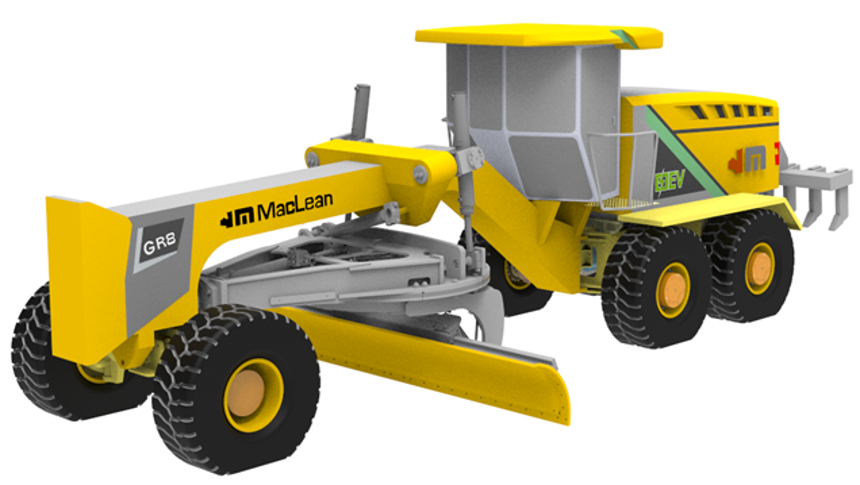Sign up for daily news updates from CleanTechnica on email. Or follow us on Google News!
Commercial vehicle owners and fleet operators are continuing their move to electric vehicles for one simple reason — they cost less to own and operate than conventional trucks and buses. The proof of the pudding comes from Republic Services. With more than 17,000 vehicles in its fleet, it is the fifth largest vocational fleet operator in the US. Most of the vehicles it operates are purchased from MacNeilus, its longtime source for recycling and waste collection truck bodies.
How do we know the EV revolution is happening in the world of commercial trucks? Because last year, Republic ordered 50 McNeilus Volterra eRCV electric trucks. Now it has just placed an order for 100 more. It seems obvious the new order would not have happened if Republic was not happy with the trucks it bought last year. The two companies signed a long term deal in early 2023. These 100 newly ordered electric trash trucks will be deployed across “multiple states,” according to Business Wire.
McNeilus is a subsidiary of the Oshkosh Corporation. CleanTechnica readers will recall that Oshkosh Defense has been tapped to develop and manufacture the next generation delivery vehicle for the US Postal Service. Initially, that order called for almost none of the new postal trucks to be battery-electric, ostensibly because Oshkosh is unfamiliar with electric vehicles, and yet its MacNeilus division appears to be ready, willing, and able to build them in quantity. Business and politics often lead to odd outcomes.
According to MacNeilus, its electric waste truck is “the industry’s first fully integrated electric refuse and recycling collection vehicle designed to meet the rigorous demands of waste and recycling collection while managing carbon emissions and providing exceptional total cost of ownership.” It gives almost no technical details, saying only that the trucks are “equipped with advanced safety features, including 360 degree cameras, lane departure sensors, and automated braking systems, ensuring both driver and community safety.” It also says that it “can operate a full day’s route on a single charge,” but does not say anything about the battery pack other than that it uses lithium-ion battery cells.
“Republic Services has been a valued partner for many years, and we are thrilled to support their sustainability initiatives with our McNeilus Volterra electric refuse and recycling collection vehicles,” said John Pfeifer, president and chief executive officer of Oshkosh Corporation. “This order is a testament to our shared vision of advancing environmental sustainability while delivering high-performance solutions for waste and recycling management.”
Arriva Bringing Electric Buses To The Netherlands

Arriva, a subsidiary of Deutsche Bahn, has been tapped to provide 157 electric buses to the West Brabant region of The Netherlands. The buses will be supplied by Dutch bus manufacturer VDL, which will deliver 58 new generation LE-122 Citeas and 99 LE-135 buses to Arriva, with deliveries starting in the first half of 2025. The vehicles will operate in the livery of local public transport operator Bravo, for whom Arriva will be working. The electric vehicles will arrive in time for the start of the new West Brabant service area, which will go into operation on 6 July 2025. Arriva won the tender for the ten-year contract worth €900 million in February of this year.
The Citea LE-122s will have 429kWh traction batteries, and the LE-135s will have 368kWh traction batteries. All 157 vehicles will be fitted with CCS Combo 2 charging sockets on the left and right side of the vehicles to ensure optimum charging flexibility at the depots. “Over 90% of public transport in West Brabant, which is provided by Arriva, will soon be by electric bus. A number we are proud of and which fits with our goal of operating on a completely CO2-neutral basis in Brabant by as early as 2027,” said Jan Pieter Been, Arriva South regional director.
Rob Mol, Managing Director of VDL Bus & Coach Nederland, added: “Arriva and VDL have been each other’s partners for many years, pulling together to achieve Europe’s zero emission target. Because of the good cooperation, we have accomplished many successful projects together. Arriva’s recurring trust in our product and our company characterises this partnership, and we are 100% committed to delivering and operating our products to the satisfaction of Arriva and the province.”
Arriva had previously ordered 64 new generation Citeas in various versions for East Brabant and the province of North Brabant. These vehicles will soon be put into service for public transport in the city of Tilburg and used on local transport lines between Uden-Veghel-Eindhoven and Uden-Veghel-Den Bosch.
Electric Graders For Fortescue

Our favorite Aussie maverick, Andrew Forrest, is following through with his plans to decarbonize his iron ore operations by converting all the machinery used in mining to electricity. Our readers in Australia suggest Forrest may be a bit of a huckster, but he is certainly putting his money where his mouth is, starting with sailing a ship powered by green ammonia to the COP 28 conference in Dubai last year.
Two weeks ago, Fortescue, a mining company owned by Forrest, ordered 475 new electric mining vehicles from Liebherr. This week, it announced that between 2026 and 2029, it will be adding a fleet of 30 GR8 EV electric graders from Canada’s MacLean, to be used in Fortescue’s mining operations in Western Australia. As with Liebherr, this is not a classic manufacturer-customer relationship. Fortescue is contributing its own battery-electric drive system developed by Fortescue Zero, a subsidiary of the company. The proprietary drivetrain will be installed in the graders, which are construction machines for leveling large areas.
“We’ve been in the underground mining vehicle business for over 50 years and as a manufacturer we have almost a decade under our belts with our full-fleet electrification program. Our track record to date is 25 vehicle models battery electrified, 100 EV units sold from bolters to boom trucks to shotcrete sprayers to graders, and half a million operating hours logged. Now we’re turning our sights to surface mining operations,” said CEO Kevin MacLean.
“Surface mining vehicle electrification represents the dawn of a new era at MacLean, but it’s one with a deep foundation in our past as a manufacturer of fit-for-purpose solutions for the mining industry,” added David Jacques, vice president for surface mining vehicles at MacLean. “We’re taking all the learnings from our GR5 Underground Grader commercialization and our years of experience in underground BEV design, manufacturing, and site support, and putting it to good use in the context of surface mining electrification.”
The Takeaway
A lot of people are crying in their beer about a supposed slowdown in demand for electric vehicles, but the interest in battery-powered heavy duty trucks, buses, and mining equipment puts a different face on things. When the bottom line is cost of operation and return on investment, the commercial world is showing a strong preference for battery-powered vehicles of all types. Whether it’s trash hauling trucks, buses, or mining equipment, fleet operators have done the math and found that electric vehicles make the most economic sense.
The fact that they also reduce carbon emissions is a plus, but if things did not pencil out on the financial side of the picture, nobody would be paying the slightest attention to electric commercial vehicles. Soon, the knowledge accumulated by the commercial sector will get carried over into the private passenger car world. Don’t write the EV revolution off quite yet. It’s just getting started.

Have a tip for CleanTechnica? Want to advertise? Want to suggest a guest for our CleanTech Talk podcast? Contact us here.
Latest CleanTechnica.TV Videos
CleanTechnica uses affiliate links. See our policy here.
CleanTechnica’s Comment Policy





